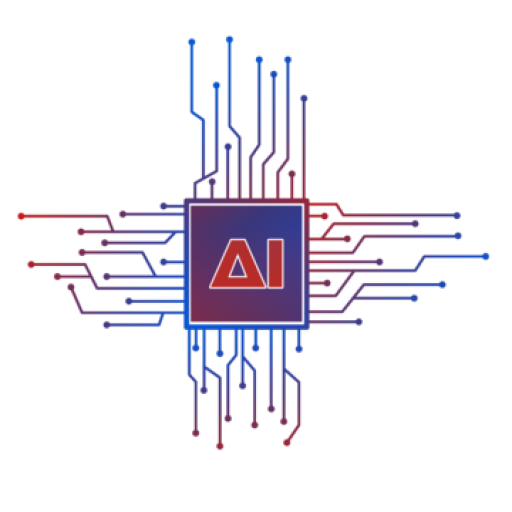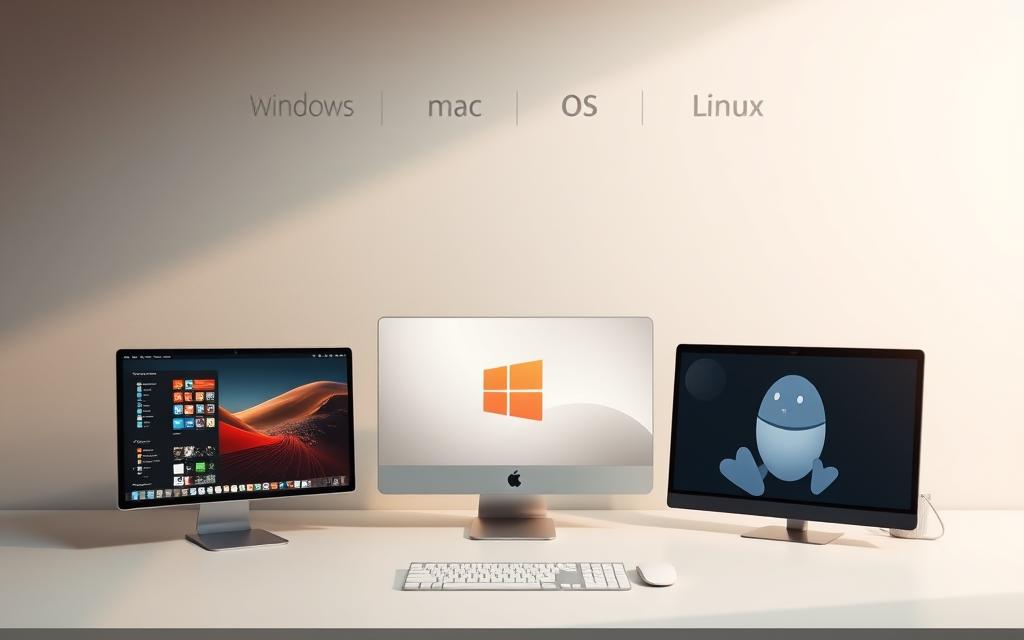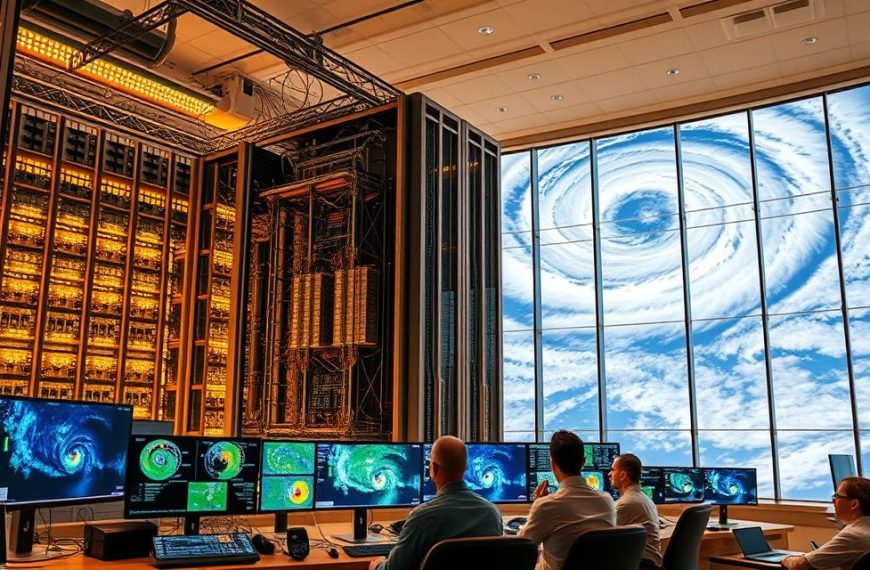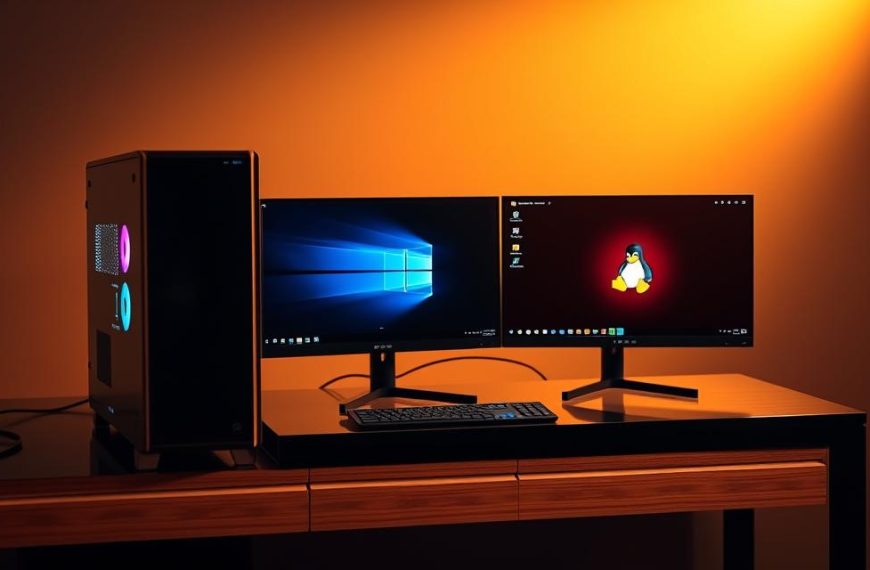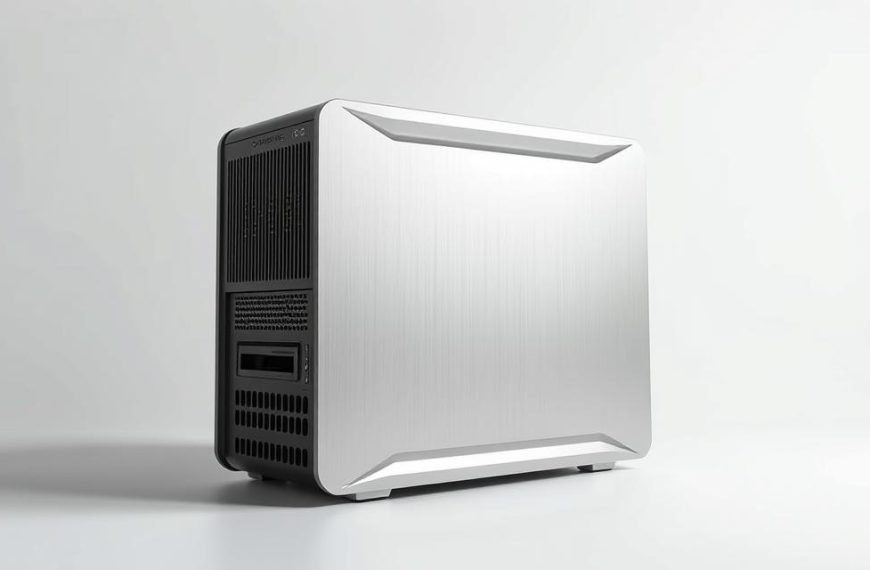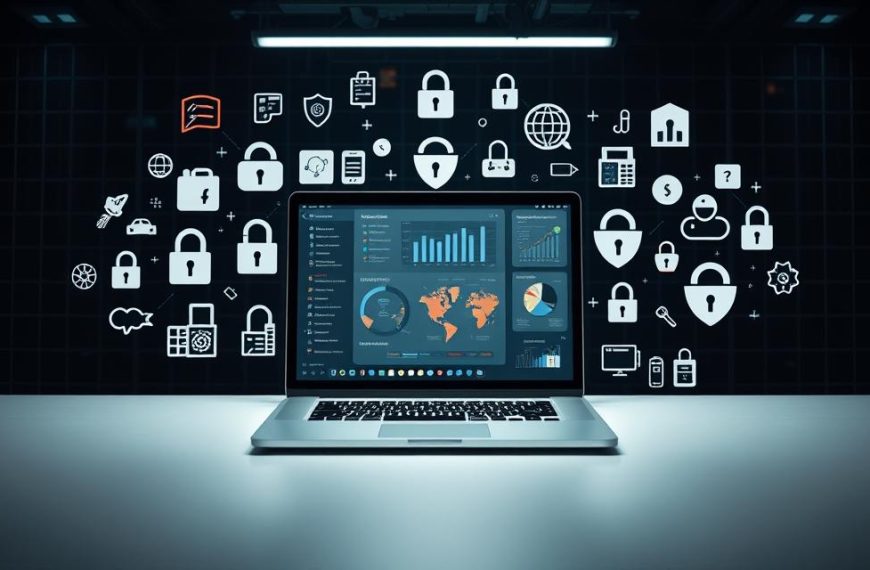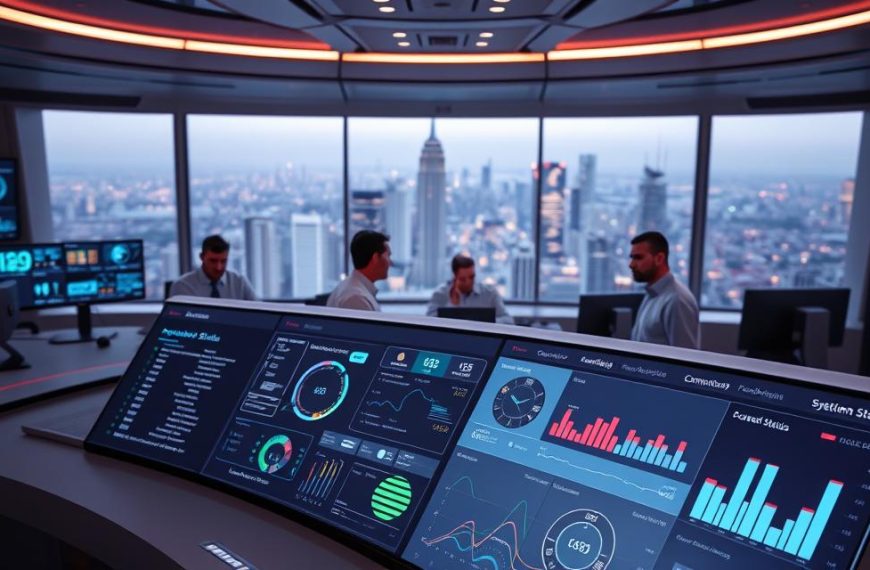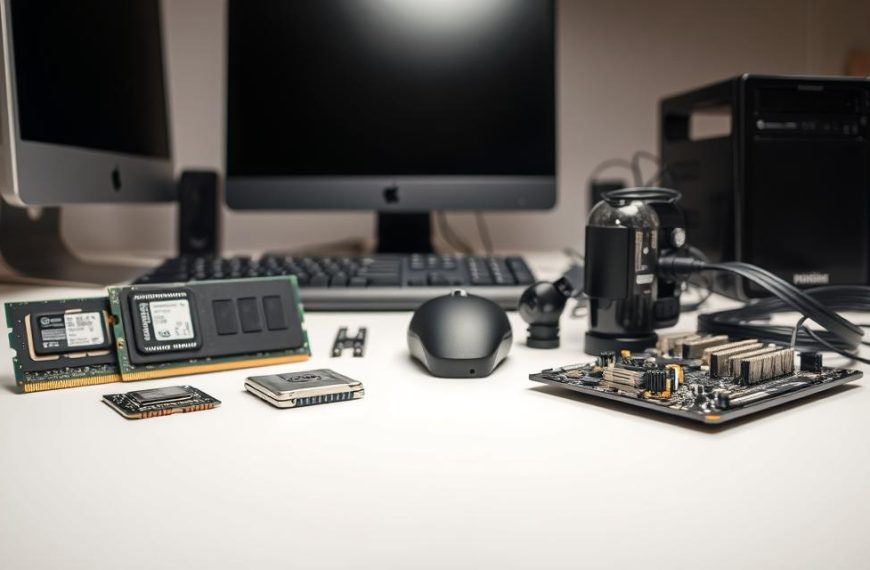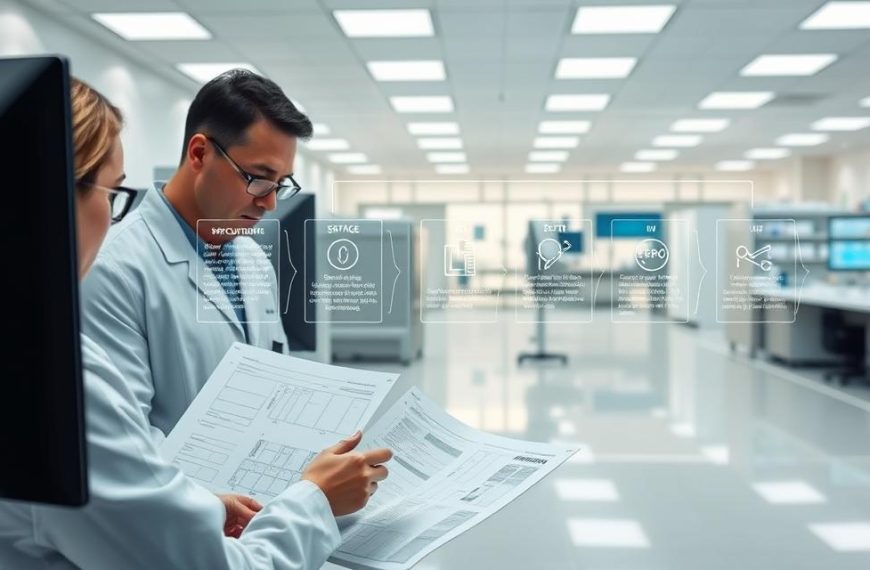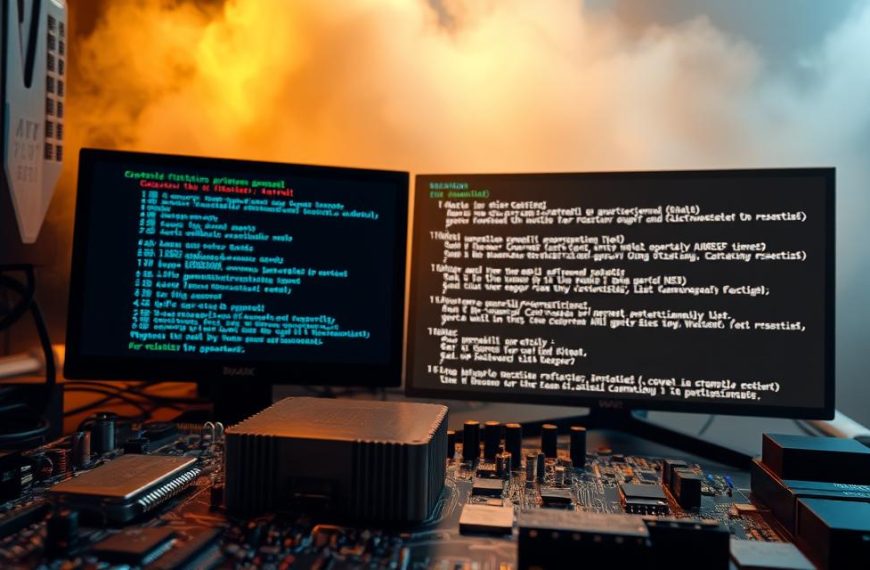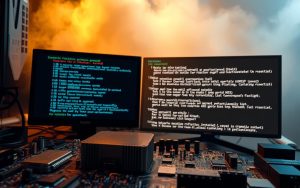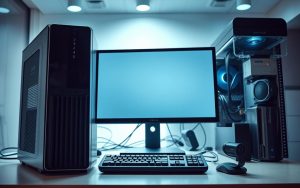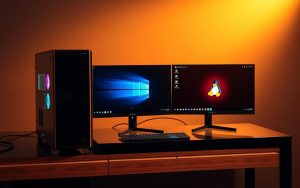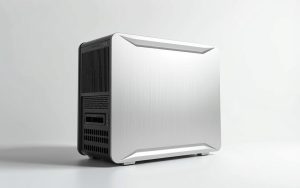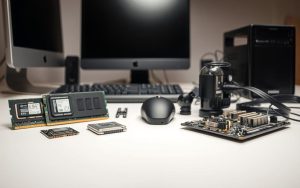Users often find many computing systems. Some are for general use, while others have special jobs.
Many common options are full desktop OS solutions. They offer complete user interfaces and support for apps. But, some systems work at a lower level or are for mobile devices.
One system is very different from usual desktop operating systems. This difference is key to understanding system types.
We will look at what makes a true desktop OS. We’ll also find out which option doesn’t fit. This will give clear insights to tech fans.
Defining Desktop Operating Systems and Their Core Functions
Desktop operating systems are different from other software. They start up your computer and manage it while it’s running. This includes handling hardware and software.
What Characterises a Desktop Operating System
Desktop operating systems are made for personal computers. They manage your computer’s hardware and software. This lets programs run smoothly.
They offer both graphical and command-line interfaces. This makes it easy to use and manage files. They also share memory between programs and the system.
Managing input/output devices is another key role. They help your computer talk to printers, storage, and screens. This is important for using your computer.
Today’s desktop operating systems let you use many programs at once. They decide which program gets more resources. This makes multitasking possible.
Security is also a big part of these systems. They have ways to keep your computer safe. This includes logging in and controlling who can see your files.
Desktop operating systems are different from mobile or server ones. They focus on user interaction and flexibility. They work with more hardware and software than others.
Knowing what makes a desktop operating system is key. It helps you choose the right one for your needs.
Defining Desktop Operating Systems and Their Core Functions
Modern desktops are complex systems that handle hardware and offer easy-to-use interfaces. They have grown a lot from older versions, adding new features to improve both how they work and how users feel about them.
Essential Features of Modern Desktop Environments
Today’s computer OS platforms are great at running many things at once. They use resources well, so everything runs smoothly, even with tough apps. They also manage memory well to keep things fast.
These systems are smart about handling storage. They work with hard drives, CDs, and flash drives using advanced file systems. This keeps data safe and sound, with extra security like encryption.
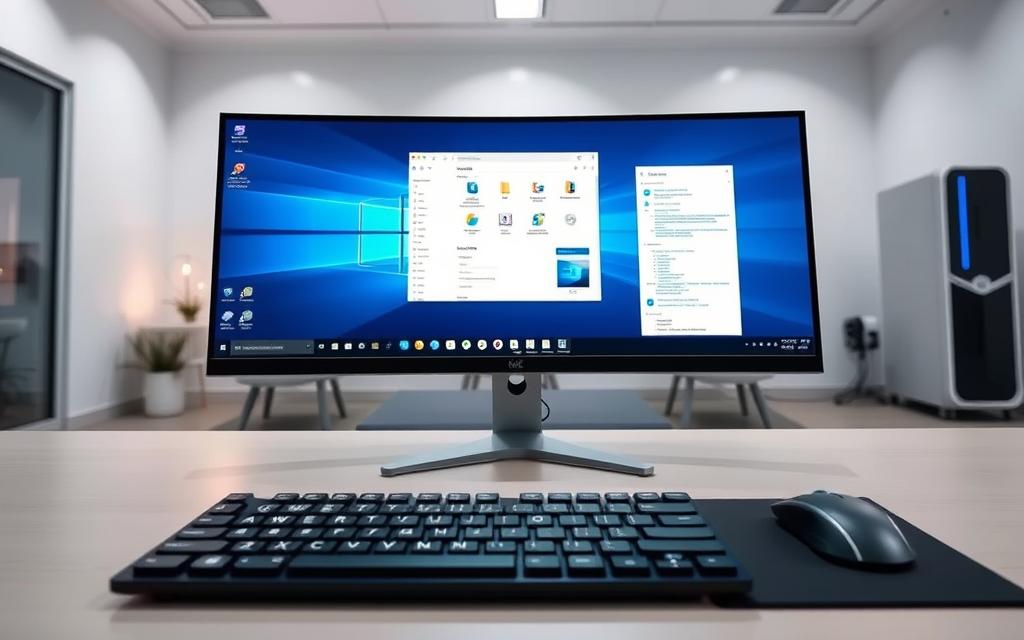
Another key thing is controlling devices. The OS makes sure printers, scanners, and USB drives work right with software. This makes everything work together smoothly.
User interface design is now super important. Today’s systems offer:
- Customisable graphical desktops
- Easy navigation and search
- Features for all kinds of users
- Standard ways for apps and windows
They also manage tasks well. The OS decides how to use the CPU, sets priorities, and keeps things running smoothly. This means you can do lots of things at once without problems.
Security is a big part of modern OS design. Systems now have:
- Firewalls
- Regular updates and fixes
- Controls for user accounts and permissions
- Tools to find and stop malware
These features make desktop operating systems stand out. They let users work efficiently while the system handles the technical stuff.
Defining Desktop Operating Systems and Their Core Functions
Understanding the history of desktop computing is key to seeing how system software has grown. From simple command-line interfaces to today’s complex graphical interfaces, we see how desktop operating systems have changed personal computing.
Historical Development of Desktop Computing Platforms
The 1980s were a big change for desktop computing. Microsoft Windows came to the forefront, starting with Windows 1.0 in 1985. This was a big step from text-based systems to graphical ones.
Windows kept getting better with each version:
- Windows 95 brought the Start menu and taskbar
- Windows XP made it more stable
- Windows 7 improved the user experience
- Windows 10 added cloud services
- Windows 11 has a new centred taskbar design
Apple’s macOS also had its own path. It started as System Software, then became OS X, and now macOS. Versions like Catalina, Big Sur, and Monterey focus on smooth hardware-software integration.
Open-source options like Ubuntu, Fedora, and Debian have been important. They gave users choices beyond commercial software. These systems showed that strong operating systems can exist outside of big companies.
Other systems, like OS/2 and BeOS, added to the mix. OS/2 was made by IBM and Microsoft and had cool multitasking features. BeOS was great for media handling and influenced later systems. Its open-source version, Haiku, keeps its unique design alive.
These changes show how desktop operating systems have kept up with new technology and user needs. Each update shows how technology has changed, but also how core functions of desktop computing stay the same.
Primary Desktop Operating Systems in Current Use
The world of desktop computing is filled with several key operating systems. These systems power millions of computers globally. Each one has its own strengths and meets different user needs.
Microsoft Windows: Dominant Market Presence
Microsoft Windows leads the market for desktop operating systems worldwide. It comes pre-installed on most personal computers sold.
Windows works well with many software and hardware. It supports a wide range of programs, from office tools to professional software.
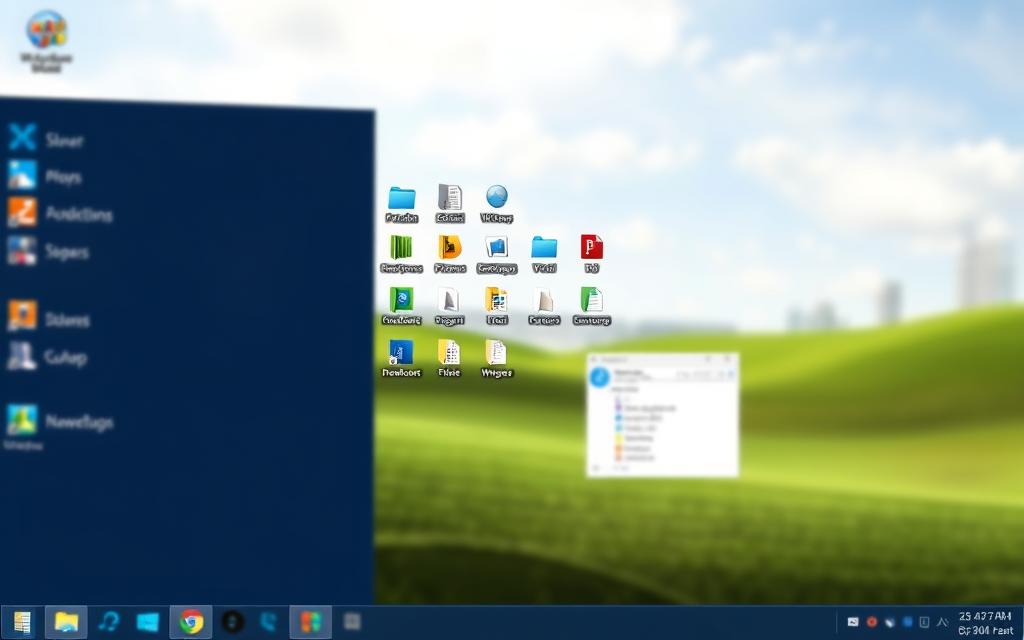
Windows 10 and Windows 11 have brought new interfaces while keeping things familiar. They focus on better security, cloud services, and user experience.
Users can manage their system through the Control Panel and Settings. They can change settings, manage programs, and personalise their desktop.
Windows operates at a higher level than basic BIOS function software. It builds on hardware basics to offer a full computing experience.
Microsoft keeps Windows up-to-date with new features and security patches. This ensures it stays relevant in today’s tech world.
Primary Desktop Operating Systems in Current Use
Apple’s macOS is a top choice for desktops. It’s known for its beautiful design and strong features. It’s different from Windows and Linux, focusing on easy use and smooth integration.
macOS: Apple’s Integrated Ecosystem
macOS is the base for all Mac computers. It offers a unified experience across Apple’s devices. Unlike mobile OS, macOS has full desktop features, including advanced multitasking and professional apps.
Over time, macOS has grown with updates like Mojave, Catalina, and Big Sur. These updates have brought better interfaces and security. Apple aims to make hardware and software work together perfectly.
macOS has many benefits:
- It’s very stable with few crashes
- It has strong security against malware
- It works well with other Apple devices and services
- It’s made to run best on Mac hardware
Professionals love macOS for its colour accuracy and media editing. It’s also reliable under heavy use. Its Unix base gives developers a powerful terminal while keeping things easy for users.
| Feature | macOS Advantage | Comparison to Mobile OS |
|---|---|---|
| Multitasking | Full window management | Limited app switching |
| File System | Complete file access | Restricted storage access |
| Software Compatibility | Professional applications | Mobile-optimised apps only |
| Hardware Support | External peripherals | Limited connectivity options |
iOS is Apple’s mobile OS for iPhones and iPads. But macOS is made for desktops. They share some design and apps but are very different in what they do.
Recent updates have added features like Sidecar. This lets iPads act as extra screens. It shows Apple’s focus on making everything work together well. This makes macOS stand out from other desktop systems.
Primary Desktop Operating Systems in Current Use
Linux is a unique choice in the world of computer operating systems. It offers flexibility and challenges traditional ways of distributing software. Users get to control their computers in ways not possible with other systems.
Linux Distributions: Customisable Open-Source Solutions
Linux is different because it’s open-source. This means anyone can see, change, and share its code. This has led to many versions of Linux, each meeting different user needs.
These versions are called distributions. They include the Linux kernel, software packages, and desktop environments. Ubuntu, Fedora, and Linux Mint are popular choices. They all offer different ways to use Linux.
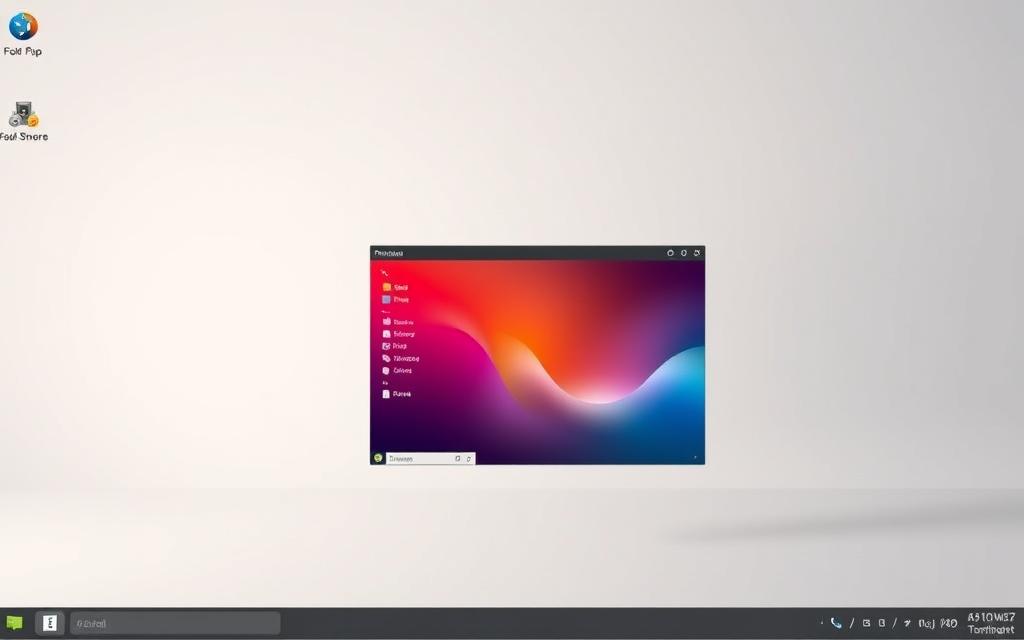
Linux’s biggest plus is its customisability. Users can change almost anything, from the kernel to the desktop look. This is great for developers, system admins, and those who value privacy.
Linux is also popular in professional settings for its reliability and security. Many companies use Linux servers, making it easy to use on desktops too. It’s also good for older computers because it doesn’t need much hardware.
| Distribution | Primary Focus | Desktop Environment | Target User |
|---|---|---|---|
| Ubuntu | User-Friendly Experience | GNOME | Beginners/General Users |
| Fedora | Cutting-Edge Features | GNOME/KDE | Developers/Enthuasiasts |
| Linux Mint | Traditional Desktop | Cinnamon | Windows Migrants |
| Debian | Stability | Multiple Options | Server/Desktop |
| Arch Linux | Customisation | User-Selected | Advanced Users |
Even though Linux isn’t as popular as Windows or macOS, it’s very influential. Android uses the Linux kernel, and many servers and supercomputers run on Linux.
Linux makes installing software easy with package managers. This is different from other systems where you have to download and install manually. It also makes Linux more secure by checking software sources.
Some people find Linux hard to learn, but modern versions are getting easier. There are many resources and forums for help. This makes it easier for new users to start.
Linux keeps getting better as a desktop option. Its open-source nature means it’s always improving thanks to people all over the world. For those who want control, security, and customisation, Linux is a strong choice.
Primary Desktop Operating Systems in Current Use
Google’s ChromeOS is a unique desktop computing platform. It differs a lot from traditional operating systems. This cloud-first system has found its own place in the market.
ChromeOS: Cloud-Centric Computing Approach
ChromeOS is a Linux-based system for Chromebook devices. It focuses on web apps and cloud storage, not local software. This makes it stand out among other operating systems.
It’s very light, so it boots up fast and works well even on basic hardware. Most data and apps are online, accessed through Google’s Chrome browser. This makes updates and security easy.
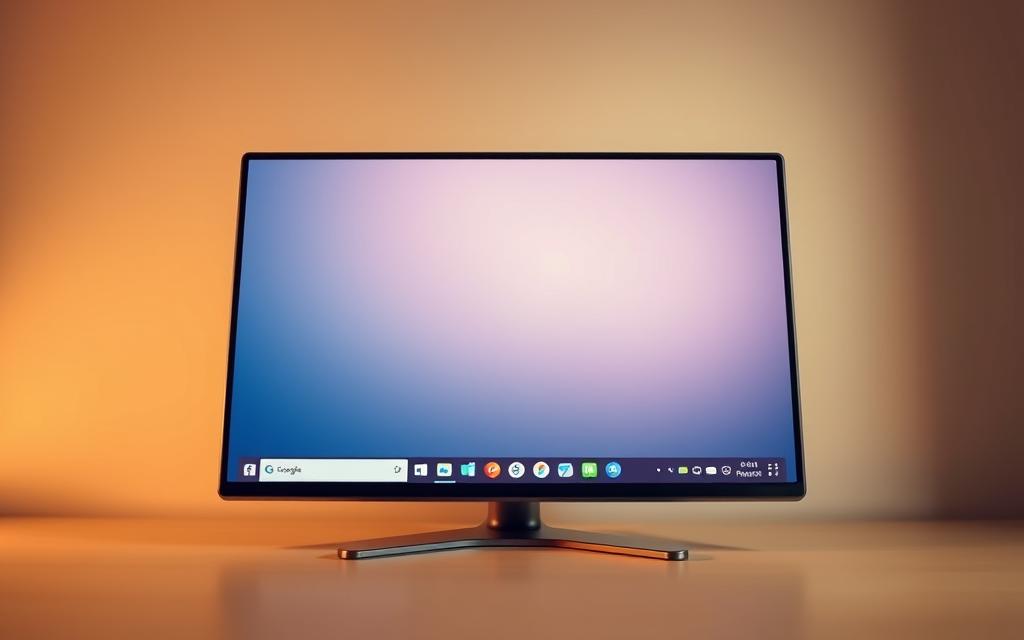
Security is a big plus for ChromeOS. It uses verified boot and sandboxing to fight malware. Your data is encrypted, and the system is read-only to prevent changes.
ChromeOS also runs web apps and Android apps from the Google Play Store. This brings mobile and desktop closer together while staying cloud-focused.
Projects like Wayne OS show how Chromium OS can be used on regular desktops. These versions keep the cloud focus but offer more customization for different setups.
ChromeOS keeps getting better, with better offline use and more app support. Even though it’s cloud-based, it can now do more locally. It keeps its unique desktop computing style.
Non-Desktop Systems Frequently Mistaken for Desktop Operating Systems
Many computing platforms share similar foundations but serve different purposes. To know which systems are desktop operating systems, we need to look at their design.
Android: Mobile-Optimised Platform Architecture
Android is often mistaken for a desktop operating system. It was developed by Google and uses a modified Linux kernel. But it’s mainly for mobile devices.
Android focuses on touchscreen use and saving battery life. It doesn’t have the same desktop features. Its interface uses gestures, not mouse and keyboard.
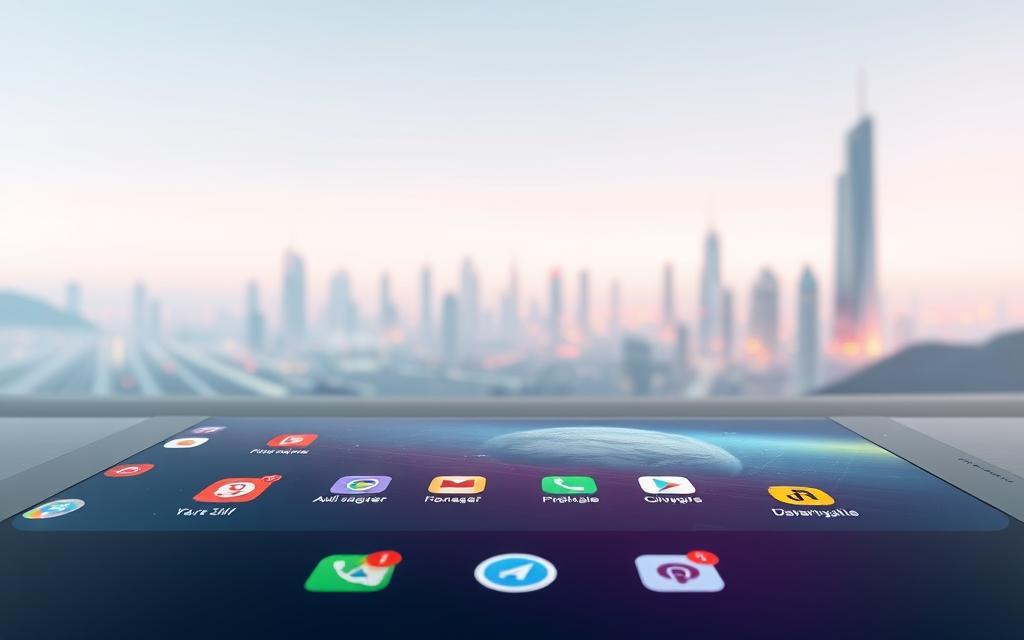
Android keeps apps separate for safety. This means apps can’t access each other’s data. It’s made for mobile use, not complex tasks.
Android stores data differently than desktop systems. It uses cloud syncing and simple local storage. It also doesn’t support many peripherals like desktops do.
| Feature | Desktop Operating Systems | Android Mobile OS |
|---|---|---|
| Primary Input Method | Mouse & Keyboard | Touchscreen & Voice |
| Application Architecture | Desktop Applications | Mobile Apps (APK) |
| File System Access | Full System Access | Restricted Sandbox |
| Multitasking Capability | Advanced Window Management | Limited Background Processing |
| Peripheral Support | Comprehensive Driver Support | Limited External Device Support |
Android apps are made with Java or Kotlin. They use APIs for mobile apps. Desktop apps use different tools and frameworks.
Android updates come through specific channels. This is different from desktop systems, which update all at once. This shows Android’s focus on mobile.
Non-Desktop Systems Frequently Mistaken for Desktop Operating Systems
Apple’s iOS is a key example of mobile platforms often mixed up with desktop systems. Many people use iOS on their phones and think it’s like desktop operating systems.
iOS: Apple’s Mobile-Centric Operating System
iOS is Apple’s mobile system, made just for iPhones. It was also for iPads at first, but now has its own iPadOS. This shows iOS is all about mobile use.
iOS uses touch gestures for handheld use. It’s not like desktop systems that use keyboards and mice. Instead, it relies on swipe, tap, and pinch gestures.
iOS works well with Apple’s other services like iCloud and Handoff. These features help data move smoothly between devices. But, iOS is not meant for desktop use.
Professionals see big differences between iOS and macOS. These include app architecture, file management, multitasking, and more.
- Application architecture differences
- File management systems
- Multitasking capabilities
- External hardware support
- Development environments
iOS only works on ARM-based processors in mobile devices. macOS, on the other hand, supports x86-64 and Apple silicon in desktops and laptops. This means iOS can’t run desktop apps.
iOS focuses on app-centric navigation, unlike desktop systems. It uses full-screen apps and gestures for simplicity and mobility. This is different from the multitasking desktops offer.
| Feature | iOS System Software | Desktop Operating Systems | Practical Implications |
|---|---|---|---|
| Primary Input Method | Touch Gestures | Keyboard & Mouse | Different interaction paradigms |
| Application Distribution | App Store Only | Multiple Sources | Varied software availability |
| File System Access | Restricted Sandbox | Full System Access | Different workflow capabilities |
| Multitasking | Limited Background Processing | Extensive Multitasking | Productivity differences |
| External Display Support | Basic Mirroring | Extended Desktop | Workspace limitations |
iOS is great for mobile tasks like messaging, media, and location services. But, it’s not for complex desktop tasks like software development or data analysis.
Knowing these differences helps us see why iOS isn’t a desktop system. It’s designed for mobile use, not desktop power.
Non-Desktop Systems Frequently Mistaken for Desktop Operating Systems
Many computing platforms share names or interfaces with desktop systems. This leads to confusion among users. It’s important to know the differences between these systems for proper use.
Windows Server: Enterprise Server Environment
Windows Server is Microsoft’s operating system for servers, not personal computers. It focuses on stability, security, and managing resources. This is different from desktop versions, which focus on user interface and apps.
Unlike desktop Windows, Windows Server manages network resources and hosts applications. It’s used in enterprise settings, not for direct user interaction. This system runs behind the scenes, powering organisational infrastructure.
Server environments need special hardware, unlike desktops. The BIOS function in servers has features for remote management and redundancy. These are not found in desktop computers.
Windows Server is built for reliability and uptime. It runs continuously, handling many requests and loads without stopping.
Windows Server is used in various ways, such as:
- Domain controllers for network authentication
- File and print servers for sharing resources
- Web servers hosting organisational websites
- Database servers managing business information
- Application servers running enterprise software
Server and desktop systems differ in memory management, process scheduling, and security. Servers focus on multi-user access, data integrity, and service availability. Desktops focus on user experience.
| Feature | Windows Server | Windows Desktop | Key Difference |
|---|---|---|---|
| Primary Purpose | Resource management and service hosting | User applications and interface | Server focuses on background services |
| User Interface | Minimal or command-line focused | Graphical and user-friendly | Desktop prioritises visual experience |
| Hardware Requirements | High RAM, multiple processors | Moderate specifications | Server demands enterprise-grade hardware |
| Security Model | Network and service protection | User data and privacy focus | Different security priorities |
| BIOS Function | Advanced management features | Standard consumer features | Server BIOS includes remote management |
Knowing these differences helps organisations choose the right operating system. This ensures optimal performance and resource use.
Server operating systems are managed by IT professionals. They configure the BIOS function for server-specific features. This includes hardware redundancy, remote administration, and advanced power management.
Non-Desktop Systems Frequently Mistaken for Desktop Operating Systems
Some Linux distributions are made for special tasks, not just for computers. These server-focused systems have the same base as desktop versions but are used differently.
Ubuntu Server: Linux-Based Server Solution
Ubuntu Server is a special version of Ubuntu Linux, made for servers, not personal computers. It doesn’t come with a graphical user interface. Instead, it focuses on command-line and remote management.
This system is all about being stable and secure. It’s perfect for big companies where keeping things running smoothly is key. It’s used for:
- Web hosting and application servers
- Database management systems
- File and print services
- Cloud computing infrastructure
- Network administration tools
Even though it’s based on Debian, like desktop Ubuntu, it’s all about server work. It gets security updates for five years without needing a big update.
Ubuntu Server runs without a monitor or user input. It uses its resources for background tasks, not for making things look good on screen.
Ubuntu Server is not for everyday computer use. It doesn’t have the usual desktop apps. It’s made for servers, not for people to use directly.
Which of These Is Not a Desktop Computer Operating System
Looking at different computing platforms, it’s key to know the difference between desktop operating systems and other software. This will show which systems are real desktop environments and which are not.
Comparative Analysis of System Capabilities
To figure out which systems are not desktop operating systems, we need to know what makes a desktop OS. Many platforms exist, but only those made for desktops with full user management, app running, and hardware control are true desktops.
BIOS (Basic Input/Output System) is definitely not a desktop operating system. It works in a completely different way than desktop environments like Windows, macOS, or Linux.
BIOS works at the basic hardware level, starting up components and helping the OS talk to hardware. But it doesn’t have the full features of a true desktop OS.
Unlike real desktop operating systems, BIOS can’t manage files, run apps, offer user interfaces, or handle processes. It’s a bridge between hardware and software, not a full computing environment.
| System Feature | Desktop OS (Windows/macOS/Linux) | BIOS | Mobile OS (Android/iOS) |
|---|---|---|---|
| User Interface | Comprehensive graphical desktop | Basic text-based setup utility | Touch-optimised mobile interface |
| Application Execution | Runs full desktop applications | No application execution capability | Runs mobile-optimised apps |
| File Management | Complete file system management | Hardware initialisation only | Mobile-optimised file access |
| Hardware Management | Comprehensive device driver support | Basic hardware initialisation | Mobile-specific hardware control |
| User Management | Multi-user account support | No user management features | Single-user mobile experience |
The table shows how BIOS is different from true desktop operating systems. Desktop OS platforms offer full computing environments. BIOS, on the other hand, prepares hardware for the OS to take over.
This difference is key to understanding computer architecture. Knowing BIOS is not a desktop OS helps us see the roles of different software in computing. From hardware start-up to full user environment management.
To decide if a system is a desktop OS, look at key features BIOS lacks. This clears up the confusion between basic firmware and full operating systems for desktops.
Which of These Is Not a Desktop Computer Operating System
Hardware compatibility is key in telling desktop from non-desktop operating systems. The parts a system can use show its purpose and what users can do.
Hardware Requirements and Compatibility Issues
Desktop systems like Windows and macOS support a wide range of hardware. They need drivers for many devices:
- Graphics cards from NVIDIA and AMD
- External printers and scanners
- Specialised input devices like drawing tablets
- USB peripherals and expansion cards
They work well with x86/64 processors. This lets them handle many different setups.
Mobile systems, such as Android and iOS, have different needs. They focus on:
- ARM-based processor architectures
- Battery life over power
- Integrated parts over add-ons
- Touchscreens as the main way to interact
This makes mobile hardware hard to use with desktop software.
Server systems, like Windows Server or Ubuntu Server, have their own priorities:
| Hardware Component | Desktop OS Priority | Server OS Priority |
|---|---|---|
| Network Adapters | Standard speeds | High-throughput capabilities |
| Storage Systems | Single drives | RAID arrays and redundancy |
| Memory Capacity | 8-32GB typical | 64GB+ configurations |
| Processor Cores | 4-8 cores | 16+ cores for virtualisation |
BIOS firmware is at the very start. It gets things ready before the OS loads. It doesn’t do much after that.
“The hardware needs show what each system is for – flexibility for users, efficiency for mobile, and reliability for servers.”
These differences explain why some systems can’t be used the same way. What a system can do physically decides if it’s a desktop.
Which of These Is Not a Desktop Computer Operating System
Looking at different computing platforms, the user interface is key. It shows if a system is for desktops, mobiles, or servers. Each interface’s design tells us its main use.
User Interface Design Differences
Desktop operating systems have detailed graphical environments. They’re made for precise input. Windows, macOS, and Linux all have window-based interfaces with menus and taskbars.
These systems need physical keyboards, mice, and big screens. They focus on showing lots of information and precise control. Touch interaction isn’t their main goal.
Mobile operating systems, like Android and iOS, are different. They use touch interfaces with gestures and virtual keyboards. Their design is simple and easy to use with fingers.
Server operating systems have very basic interfaces. Windows Server and Ubuntu Server use command-line interfaces for remote management. This saves system resources and makes scripting easier.
BIOS and UEFI firmware have simple setup tools. They’re not full operating systems. They only handle hardware setup before the main OS loads.
| System Type | Primary Input Method | Interface Characteristics | Typical Screen Size |
|---|---|---|---|
| Desktop OS | Keyboard & Mouse | Window-based, multi-tasking | 13-27 inches |
| Mobile OS | Touch & Gestures | App-focused, gesture navigation | 4-7 inches |
| Server OS | Command-line | Text-based, remote access | Variable/Headless |
| BIOS/UEFI | Keyboard Only | Menu-based configuration | N/A |
The design of each system’s interface shows its purpose. Desktops are for work and multitasking. Mobiles are for being on the move and using touch. Servers are for remote management and efficiency.
Knowing these differences helps spot non-desktop systems fast. If you see a touch interface or command-line, it’s not a desktop OS.
Conclusion
Desktop operating systems are special software for managing computers. They help users interact with their hardware. This makes tasks like multitasking and file management easier.
Microsoft Windows, macOS, Linux, and ChromeOS are the main desktop operating systems today. Each has its own features but all do the basic tasks well. They support lots of software and hardware, perfect for desktop use.
BIOS is not a full operating system but firmware that starts the computer. Mobile systems like Android and iOS focus on touch screens and apps. Server systems, like Windows Server and Ubuntu Server, are for big networks and data, not personal use.
Knowing these differences helps users pick the right software for their needs. The main differences in design and function set desktop systems apart from others.
